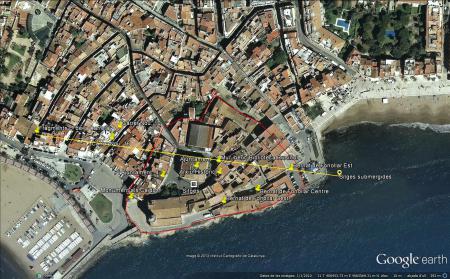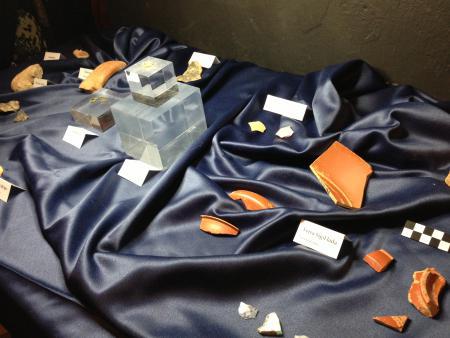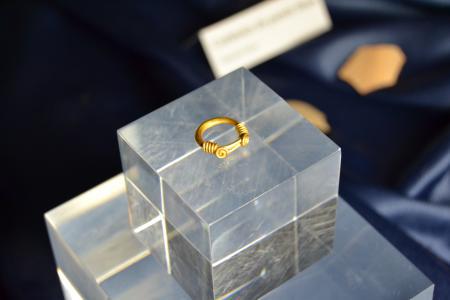The Archaeological Collection
Inside the large municipality of Sitges there are archaeological sites from all eras, some of them of universal significance. The materials that have been found are scattered in several museums and archaeological deposits of the country. The will of the City Council and the Sitges Heritage Association is to bring them together and show a selection to the public, that will allow to know the deepest roots of the town.
These materials include the tools and the skeletal remains of a Neanderthal Man found at Cova del Gegant, which is the Catalan site with more remains of this Human specie. Currently, the Neanderthal jaw found at Cova del Gegant is in deposit at the Barcelona branch of the Archaeology Museum of Catalonia, which illustrates the human existance during Middle Paleolithic.
Cova de Sant Llorenç also unveiled very interesting findings, which correspond to the time of arrival of the first farmers, Neolithic cultures from the Middle East. In Cova Verda and other sites there were proofs of human presence during the Bronze Age.
There are a number of sites from the Iberian period, still little studied, indicating an intensive settlement during the period immediately preceding the arrival of the Romans. But the most important site, and that should give more surprises in the future, is the old town itself, inhabited since at least the Final Bronze Age and the First Iron Age. The excavations that has been done so far have show that there are many underground silos that must have given the town its name during the Middle Ages, which were in use in Iberian, Roman and medieval periods. Such silos were filled with numerous materials imported from Central and Eastern Mediterranean, which stresses the importance of the port and trade in this settlement during antiquity..
Apart from the silos, the old town has revealed remains of Iberian and Roman walls and buildings, as well as numerous materials from such periods. Particularly important was the golden ring from the 1st Century - the so-called Ring Subur-, located on the Bernat de Fonollar street during the refurbishment of the museum which seems to have a British or northern European origin.
Another important Roman site is located around the Shrine of Vinyet. It is a Roman villa, a large rural residence belonging to a wealthy family, which has been partially excavated with very promising results. From this Villa comes the Late Roman sarcophagus which is currently in Racó de la Calma.
Since ancient times, the site of Sitges has been associated with a small Roman town mentioned in classical sources called Subur. Although this association has been discussed by some specialists, the fact is that it has never been ruled out and maybe the future holds the answer under the form of a future proof.
Medieval and modern archeology in Sitges still has a long way to go and can be considered as incipient. There have been medieval findings in the old town and in the castle Miralpeix. Knowing the importance of the town in these periods, there is no doubt that it will produce many more.
As for the Modern Age, the only important excavation at a site of this period was inside Can Rocamora, at the start of the renovation work of museums (2010), with very interesting and encouraging results.



 Buy tickets
Buy tickets Buy tickets
Buy tickets





